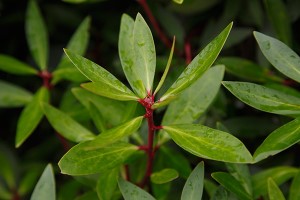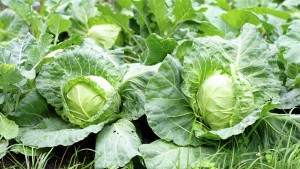- Houseplants
- 4,228
Sea purslane (Sesuvium portulacastrum) is an edible succulent plant that is native to many parts of the world, including North America, Australia, South Africa and parts of Asia. It is an incredibly hardy plant, able to survive in a variety of climates and is a great addition to any garden.
It prefers to have its feet in the water and have a salty taste, while the stems are used in salads and soups. It is also known for its medicinal value, as it is believed to have anti-inflammatory and antioxidant properties.
Here at Garden Pie, we shall look into how to grow and care for sea purslane plant.
Table of contents [Show]
- 1 What you need to know about sea purslane
- 2 Appearance and characteristics of sea purslane
- 3 Uses for sea purslane
- 4 Steps to grow sea purslane ?
- 5 Caring for sea purslane
- 6 How often should you water and feed sea purslane ?
- 7 How and when to harvest sea purslane ?
- 8 How to propagate sea purslane ?
- 9 Safety tips after planting sea purslane
- 10 Diseases and pests that affect sea purslane
What you need to know about sea purslane
Sea purslane is a type of seaweed that is becoming increasingly popular as a health food and ingredient. It is an edible seaweed that is native to the Mediterranean Sea, and is also found in the Atlantic, Pacific, and Indian Oceans.
It is a nutritional powerhouse. It is high in protein, calcium, iron, and vitamins A, C, and E. It also contains antioxidants and omega-3 fatty acids, making it a great addition to any diet. Sea purslane is a great source of dietary fiber and helps maintain healthy blood sugar levels.
It is also is low in calories and has a mild, salty flavor. It can be eaten raw, cooked, or dried and ground into a powder. The seaweed can be used in salads, soups, stews, and stir-fries. It is also popular as a topping for sushi and can be used to make a delicious dip.
When purchasing sea purslane, look for fresh, bright green leaves. Avoid any seaweed that is slimy or discolored, as these are signs of spoilage. Sea purslane should be stored in a cool, dry place and used within a few days of purchase.
Facts about sea purslane includes:
- Name: sea purslane, shoreline purslane (Sesuvium portulacastrum).
- Height: up to 30cm.
- Plant type: perennial herb.
- Climate: warm temperate, sub-tropical, tropical.
- Soil: well-drained.
- Position: full sun to part shade.
- Foliage: fleshy and glossy green but can turn yellow or red with age or sun exposure.
- Flowering: small pink, star-shaped flowers appear at various times throughout the year and are followed by green, egg-like capsules filled with black seeds.
- Feeding: feed a couple of times a year with a complete organic fertiliser.
- Watering: water regularly until established.
You can see that Sea purslane is a healthy and delicious addition to any diet. It is packed with nutrients, low in calories, and has a mild, salty flavor that can be used in a variety of dishes. For those looking to add more nutrition to their diet, sea purslane is a great choice.
Appearance and characteristics of sea purslane
Sea purslane (Sesuvium portulacastrum) is an edible succulent found on beaches around the world. It is a low-growing plant with thick, fleshy, triangular leaves that are green on top and white underneath. The flowers are small and white, and the fruits are tiny, edible berries.
It is a hardy plant that can survive in a variety of environments. It is salt tolerant and can tolerate the extreme temperatures found on the beach. It is able to survive long periods of drought and is fairly resistant to pests and diseases.
The plant is edible and has a mild, salty flavor. It can be eaten fresh or cooked, and is often used in salads, soups, and stews. It is also used as a garnish or as an ingredient in sauces and dressings.
It is a good source of vitamins A, B12, and C, as well as iron, calcium, and potassium. It is also high in dietary fiber and can aid in digestion.
Finally, it is attractive and adds an interesting texture to any garden. It is easy to grow and requires minimal care. It can be grown in containers or directly in the ground. It will thrive in sandy, well-drained soil and should be watered regularly.
Uses for sea purslane
Sea purslane, or samphire has long been used as a culinary ingredient and is becoming more popular as a health food. Its unique flavor and texture make it a great addition to salads, soups, and more.
Here are some of the uses for sea purslane:
- Salads: Sea purslane has a salty, savory flavor that makes it perfect for adding to salads. You can add it raw or cooked, either as a topping or mixed in with the greens. It has a crunchy texture and pairs well with other vegetables and fruits.
- Soups: Sea purslane can be used to add flavor and texture to soups. It can be cooked with the other ingredients or added at the end for a bright and salty flavor.
- Side Dishes: Sea purslane is a great addition to side dishes. It can be cooked with other vegetables or served as a simple side dish with a lemony vinaigrette.
- Pickles: Sea purslane can be pickled in a vinegar brine and served as a condiment. The salty and tart flavors make it a great accompaniment to sandwiches and burgers.
- Garnish: Sea purslane is a great way to add visual interest to dishes. It can be used to garnish salads, soups, and other dishes.
- Smoothies: Sea purslane can be blended into smoothies for a salty and savory flavor. It adds a unique twist to smoothies and can be used in combination with other fruits and vegetables.
- Tea: Sea purslane can be used to make a tea that has a salty, savory flavor. It’s said to have some health benefits and can help to relieve stress and promote relaxation.
Steps to grow sea purslane ?
Growing sea purslane is a relatively simple process and can be done by anyone.
Here are the steps to follow:
1. Choose a location: Sea purslane needs full sun and well-draining soil. Choose a location that has these two conditions, or amend the soil with sand and compost to give it the draining properties it needs.
2. Plant the seeds: Sea purslane seeds are tiny, so it is best to mix them with a little sand before planting. This will make it easier to evenly distribute them in the soil. Plant the seeds about 1/4 inch deep and cover them lightly with soil.
3. Water the seeds: Water the seeds lightly and keep the soil moist. Be careful not to over water them as this can cause the seeds to rot.
4. Thin the seedlings: Once the seedlings have sprouted, thin them out so that they are spaced about 6 inches apart. This will give the plants room to grow and will ensure that they get enough sunlight and nutrients.
5. Fertilize: Sea purslane is not a heavy feeder, but it will benefit from a light application of a balanced fertilizer once a month during the growing season.
6. Harvest: Sea purslane can be harvested at any stage of growth, but it is best to pick it when the leaves are still young and tender. The leaves can be eaten raw, cooked, or pickled.
Caring for sea purslane
Sea purslane (Sesuvium portulacastrum) is known for its ability to survive in harsh environments, such as saltwater, sand, and high temperatures. It is an ideal plant for coastal gardens and landscapes because of its low maintenance and salt tolerance.
When caring for this plant, it is important to provide the right environment to ensure its health and growth. It prefers full sun and well-drained soil. It can survive in a variety of soil types, including sandy and salty soil, but it does best in soil that is high in organic material. When planting, it is important to make sure that the soil is not too dry or too wet.
Watering is also important for sea purslane. The plant does not require a lot of water, but it does need regular moisture to maintain its health. It is best to water the plant deeply, but not too often. Overwatering can cause the roots to rot, so it is important to let the soil dry out between waterings.
Finally, it needs to be fertilized every few months to ensure optimal growth. It is important to use a fertilizer specifically designed for succulents and cacti. The fertilizer should be applied to the soil surface and lightly mixed in. Overfertilizing can cause the plant to be burned, so it is important to only use the recommended amounts.
How often should you water and feed sea purslane ?
Sea purslane is known for its ability to thrive in salty and sandy habitats, making it a popular choice for coastal gardens and rock gardens. With its low-maintenance care requirements and its ability to thrive in challenging environments, it is an ideal plant for gardeners of all skill levels.
So, how often should you water and feed sea purslane?
Generally, sea purslane should be watered every 7-10 days during the growing season. The frequency of watering can vary depending on the environmental conditions, so it is important to keep an eye on the soil moisture levels to ensure the plant is not being overwatered. If the soil remains too wet for extended periods of time, the plant is likely to become overwatered and may even develop root rot.
When it comes to feeding sea purslane, it is best to fertilize the plant every three months during the growing season. A balanced fertilizer with a low level of nitrogen is ideal for sea purslane as too much nitrogen can cause the plant to become leggy and unhealthy. Alternatively, you can supplement your sea purslane with a liquid fertilizer every two weeks. This will help ensure that the plant has access to all of the necessary nutrients to thrive.
How and when to harvest sea purslane ?
Sea purslane can be harvested throughout the year. It grows in many regions and is an excellent addition to any diet. Harvesting sea purslane is simple and straightforward, and the timing of when to harvest it is important to ensure the best quality.
It can be harvested anytime during the growing season, which typically runs from late spring to early fall. The plant is ready to be harvested when it has developed a deep green color and its leaves are firm and succulent. If the leaves have started to yellow, the plant is past its prime and should not be harvested. To harvest, cut the leaves and stems from the base of the plant with a sharp knife or scissors.
When harvesting, it is important to be mindful of the environment. It is a popular plant, so it is important to not take too much from a single spot. Harvesting from multiple areas helps to maintain the health of the plant, as well as its population in the wild.
It can be stored for a few days in the refrigerator or in a cool, dry place. It can also be frozen for longer periods of time. It can be cooked in a variety of ways, including steaming, sautéing, stir-frying, and in soups and stews.
How to propagate sea purslane ?
Propagating sea purslane is relatively easy and can be done through vegetative methods such as stem cuttings and division.
Stem Cuttings
The best time to take stem cuttings is in the late spring or early summer when the growth is most active. Cuttings should be taken from healthy, non-flowering stems that are about 4-6 inches long. Make sure to cut the stems just below a node (where the leaves and stems meet). Place the cuttings in a warm, bright location and keep the soil slightly moist but not wet. The cuttings should take root within a few weeks and can then be transplanted into individual pots.
Division
Sea purslane can also be propagated through division. In the spring or summer, gently dig up the plant and use a sharp knife to divide the root system into two or more sections. Replant each section into individual pots and keep them in a warm, sunny location. Water the plants regularly and they should take root within a few weeks.
Safety tips after planting sea purslane
But before you start planting, it's important to take the necessary safety precautions to ensure that you're not putting yourself or your family at risk. Here are some safety tips to follow after planting sea purslane:
1. Wear protective clothing: Sea purslane can be an irritant to the skin, so it's important to wear protective clothing when planting it. This includes long pants, long sleeves, and gloves.
2. Keep a safe distance: Sea purslane can spread quickly and can easily choke out other plants in your garden. It's important to keep a safe distance between the sea purslane and any other plants that you’ve already planted.
3. Monitor the area: Once the sea purslane is planted, you should monitor the area to make sure that it's not spreading too quickly and choking out any other plants.
4. Prune and trim: Pruning and trimming sea purslane can help to keep it under control and prevent it from taking over your garden or yard.
5. Check for pests: Sea purslane can be susceptible to pests and diseases, so it’s important to check for any signs of these. If you notice any pests or diseases, it’s best to contact a professional for assistance.
Diseases and pests that affect sea purslane
Despite its hardy nature, sea purslane is still prone to a number of diseases and pests that can affect its growth and health.
Root rot
The most common disease that affects sea purslane is root rot. This fungal disease is caused by a number of different fungi, but is most commonly caused by the fungus Phytophthora. Root rot can cause the roots of the plant to rot, leading to wilting and yellowing of the leaves.
To prevent and treat root rot, it is important to practice good soil drainage and ensure that the soil does not become overly saturated.
Additionally, fungicides can be used to help control the spread of root rot.
Weevil
Sea purslane is also susceptible to a number of pests that can damage the plant. The most common pest is the sea purslane weevil, which feeds on the leaves of the plant. The weevils can cause severe damage to the plant, leading to wilting and yellowing of the leaves.
To prevent and manage these pests, it is important to keep the area free of weeds and debris, and to use biological control methods such as releasing beneficial insects.
In addition to root rot and pests, sea purslane can also be affected by a number of other diseases and pests. These include powdery mildew, which can cause white, powdery spots on the leaves, and root-knot nematodes, which can cause stunted growth and wilting of the plant. It is important to properly identify the disease or pest that is affecting the plant, and then take the necessary steps to prevent and treat it.
Conclusion
In fact, Sea purslane is an attractive succulent that thrives with minimal care. Its naturally salty and drought-tolerant nature makes it well suited for coastal gardens as well as indoor container growing. Although often considered a weed, sea purslane deserves a place in any collection of hardy succulents. With fleshy leaves and colorful flowers, sea purslane provides interest for much of the growing season.
For the home gardener, sea purslane is easy to propagate and cultivate. Start with a single plant and you'll soon have many, either through stem cuttings or the prolific self-seeding of this coastal native. Place in a sunny spot, water sparingly, and fertilize lightly for a low-maintenance plant that asks little but gives a lot in return.
If you're looking for an introduction to succulents that handles neglect in stride, sea purslane may be the perfect choice. With basic care tips for light, soil, and water, you'll be on your way to enjoying this decorative coastal succulent for years to come. Hardy, salt-tolerant, and easy to grow, sea purslane deserves a place in coastal and drought-friendly gardens as well as indoor containers.
Give this seaside native a try!
Here are 21 tips to keep your sea purslane healthy and looking its best:
1. Plant in full sun. Sea purslane needs at least 6 to 8 hours of direct sunlight per day to thrive.
2. Plant in sandy, well-drained soil. Sea purslane does not do well in heavy, clay soils that retain moisture. A light, sandy potting mix is best.
3. Water lightly but frequently. Sea purslane needs moist but not soggy soil. Water when the top inch or so of soil is dry.
4. Fertilize during the growing season. Use a balanced, all-purpose fertilizer once a month during the spring and summer. Dilute to 1/2 the recommended strength.
5. Prune to shape. You can prune sea purslane at any time to remove dead or dying stems and to shape the plant. Cut stems down to their base.
6. Repot if potbound. If your sea purslane is in a container, check if it has become potbound by gently removing it from the pot. Repot in fresh, sandy soil if the roots are tightly crowded.
7. Bring indoors before frost. If growing sea purslane in a climate with frost, bring the plant indoors before the first frost of fall. Place in a sunny spot indoors.
8. Water sparingly over winter. When sea purslane is indoors over winter, water just enough to keep the soil barely moist. Allow the top inch or so to dry out between waterings.
9. Repot in spring before moving outdoors. If sea purslane was brought indoors for the winter, repot it in fresh, sandy potting mix in spring before moving it back outdoors. Move it outside once all threat of frost has passed.
10. Pinch back stems to promote fullness. Pinching back some of the stems by about one third in the spring and summer will encourage sea purslane to produce more stems and foliage for a fuller appearance.
11. Mist with a spray bottle. Mist sea purslane with a spray bottle to raise the humidity around the leaves. Do this especially when the plant is indoors.
12. Wipe leaves to remove dust. Use a damp cloth to gently wipe the leaves and remove any built up dust. Dust on the leaves prevents light from reaching them.
13. Apply seaweed fertilizer. Applying a seaweed-based fertilizer once a month provides sea purslane with essential trace nutrients and minerals to keep your plant healthy.
14. Repot annually in spring. Repot sea purslane every spring after the last frost to provide it with fresh soil and nutrients for the growing season. Move up one size pot at a time.
15. Divide in spring if desired. If your sea purslane has become crowded, carefully divide it in half or thirds in the spring and repot into separate containers. Make sure each division has some roots and stems attached.
16. Watch for common pests. The most common pests for sea purslane include mealybugs, aphids, spider mites, and scale. Treat with insecticidal soap or horticultural oil.
17. Propagate from stem cuttings. To propagate new sea purslane plants, take 3-4 inch stem cuttings in spring or summer. Remove lower leaves and place in well-draining rooting medium. Keep soil moderately moist. Roots will form in 2-3 weeks.
18. Display outdoors in warmer months. Once nighttime temperatures reach the 50s Fahrenheit, you can move your potted sea purslane plant outdoors for the summer. Place in a spot with plenty of sun.
19. Mulch outdoor plants. Apply a 2 to 3 inch layer of gravel mulch over the soil around outdoor sea purslane plants. This will help retain moisture in the soil and prevent weed growth.
20. Bring indoors if temperatures drop. Watch the weather forecast and bring outdoor potted sea purslane plants indoors if temperatures are predicted to drop below 45 F.
21. Repot every 2-3 years. If keeping sea purslane in the same container long term, repot every 2 to 3 years in the spring to provide new, fresh soil and nutrients. Select a pot one size larger.





